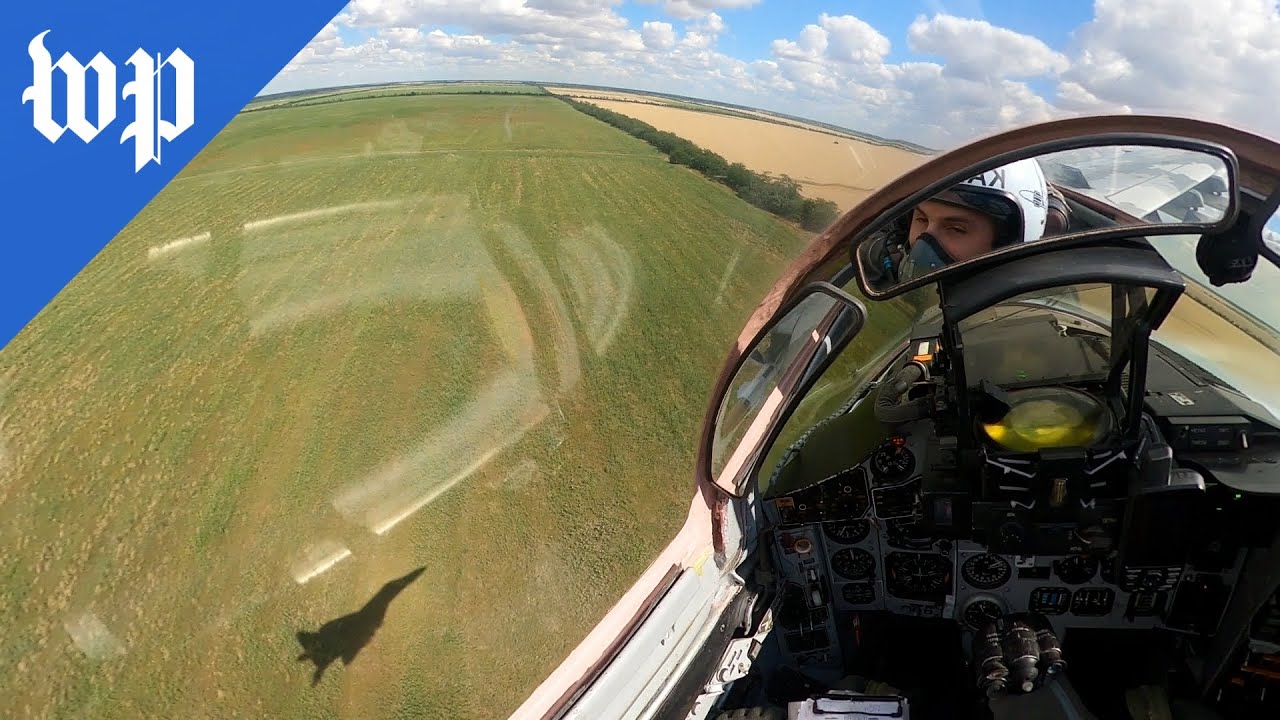Flying Low And Fast Over Ukraine In An Aging Mig-29
Unleash Your Creative Genius with MuseMind: Your AI-Powered Content Creation Copilot. Try now! 🚀
The Heart-Stopping Flight: A Glimpse into the Ukrainian MiG-29 Cockpit
[engine whirring]
Fear, an unwelcome companion, precedes every flight. However, in the cockpit of a Ukrainian MiG-29 soaring over Kherson, fear is not the same as panic. Major Vadym Voroshylov, a.k.a. "Karaya," skillfully maneuvers his aircraft, defending two su-25s from Russian fighters. The mission unfolds at breakneck speed, with the MiG-29 flying perilously close to the ground at over 500 mph.
"The lower we fly, the later we will be discovered," Major Voroshylov asserts. Yet, his MiG-29, a relic of Soviet-era technology, faces vulnerability against the more modern Russian Air Force fighters, capable of firing long-range missiles from higher altitudes.
The Intricate Game of Detection: MiG-29 vs. Su-35
In this high-stakes aerial ballet, the MiG-29's limitations become stark. Major Voroshylov can detect Russian planes at only 45 miles, while they can spot his MiG at a staggering 125 miles. The technological asymmetry prompts Ukraine's President, Volodymyr Zelenskyy, to lobby for American-made F-16 fighter jets, armed with radar capabilities beyond the MiG-29's reach.
"So, this is one of the deficiencies the Ukrainians are currently suffering from," Zelenskyy emphasizes, pushing for F-16s to counter the stark technological imbalance.
The Reluctant Aid: F-16s and the Biden Administration's Stand
Boxbox! The urgency echoes, urging swift action. The MiG-29 fleet's inadequacies push for F-16 assistance, but for months, the Biden administration hesitates. The initial refusal becomes a hot topic until a surprising turn of events at the G7 Summit in May.
The White House grants European allies the green light for F-16s, signaling a shift in perspective. The change is attributed to growing concerns that the war will persist, with time favoring Russia. The air of uncertainty permeates the diplomatic corridors as the world watches.
F-16s: Not Magic, but a Strategic Shift
"And F-16s — There's no magic weapons in war," cautions a US official. The F-16 is not a miraculous solution, but it represents a strategic shift in Ukraine's defense narrative. As celebrations in Kiev unfold, officials temper expectations, emphasizing the time required to build a robust air force.
"As we go forward, F-16s clearly have a role. Ukraine deserves a capable air force," underscores the need for a long-term vision.
The Future Sky: F-16 Training and NATO's Role
The prospect of F-16 training by European allies emerges as a beacon of hope. Transitioning from MiG-29 to F-16 is no leap from a Chevy to a Tesla, but it's a crucial step in modernizing Ukraine's air force. Learning new weapon systems becomes the focal point, requiring time and dedication.
The NATO F-16s hold the promise of breaking the stalemate in Ukraine's war. In a conflict resembling World War I's artillery slugfest, air power becomes the trump card. The question remains: can F-16s be the game-changer, providing Ukraine with a decisive advantage over the Russians?
In the turbulent skies above Ukraine, where danger dances and geopolitical stakes soar, the F-16 represents more than a fighter jet. It embodies the hope of a nation, the promise of security, and the potential to alter the course of a war that hinges on the delicate balance of perplexity, burstiness, and unpredictability.

Related Recaps
- Major elections bill passes House, heads to the governor
- THE HUSTLER'S MINDSET, THERE ARE NO EXCUSES - Motivational Speech (Marcus Elevation Taylor)
- O s c a r M e d i n a Greatest Hits ~ Top Praise And Worship Songs 2023
- POLÍCIA FEDERAL IRÁ INVESTIGAR A MUAMBA DO JAIR | Direto da Redação AO VIVO com ERIKA KOKAY (PT-DF)
- Txrbo - Can’t Take It Anymore [Official MV]